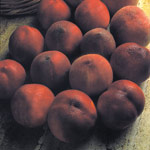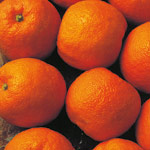products / horticulture / green asparagus
The asparagus, whose botanical name is Asparagus officinalis L. belongs to the Liliacea family.
There is a common belief that locates this plant in a wide swathe from the Iberian peninsula to Asia Minor. Archaeological remains in Egypt give testimony to its existence over 5000 years ago where it seems to have been one of their favourite offerings to the gods. The Greeks encouraged its cultivation and considered it be a vegetable fit for royalty. During the Middle Ages, asparagus as a crop practically disappeared, Spain being the only country to continue its cultivation and later reintroduce it into Europe.
From a nutritional point of view, the asparagus has a very low calorie content, a high water content (about 90%) and hardly contains any protein (2.9%) although it does have lots of fibre, which makes it a perfect ally for weight loss diets. At the same time it is full of vitamins: C, A, thiamine (B1), riboflavine (B2) and such minerals as potassium and calcium. Its distinctive taste has made it a gastronomical favourite that is used in many ways: as an appetiser, accompanied by dressings (mayonnaise, vinagrette, cream sauce and slightly oven broiled), as a creamed puree, scrambled with eggs, a salad ingredient, in soups, in mousse, a side dish, etc., and always a luxury for the taste buds.
Asparagus has been attributed several therapeutic properties. The most well known is its ability to stimulate the production of urine due to the asparagus alcaloid. It has also been used to combat intestinal parasites, in anti-rheumatic treatments and for digestive problems. Its appreciable amount of folic acid merits its recommendation during pregnancy to avoid the appearance of espina bifida.
Asparagus is a good diuretic, helping the organism to eliminate retained liquids. Furthermore it is an excellent cardiac tonic, a good sedative for combating nervousness, and is known to have aperitiva(apperitive ??) properties. However, it should only be consumed in moderation by those with kidney problems (nephritis) and, as it is also rich in purines, it is not recommended for those with high uric acid levels or gout. It is also off limits for urinal infections like cystitis since the sulphur substances it contains could cause urethral irritation.
That is not all that this excellent product can do. Recent research suggests that asparagus might help to efficiently prevent colon cancer. Even more relevant is the role it plays in the fight against one of the most serious of diseases: leukemia.
Basic Nutritional Values of Asparagus
| Kilocalories | 13 |
| Kilojules | 53 |
| Potassium (mg) | 110 |
| Vitamin C (mg) | 5 |
| Vitamin E (mg) | 0,56 |
| Carotenes (mg) | 0,255 |
| Folic Acid | 0,074 |
| per 100 gr. of cooked asparagus | |
THE CROP
The asparagus plant is herbaceous, with a thick rhizome (underground stem) that stands straight and grows up to a meter and a half tall. The leaves are very small, off white, almost invisible. What looks to us like leaves are actually modified stems (called cladodios) that look like needles, and are a dark green colour, appearing in small clusters of three or four. Its flowers appear along the whole length of the stem, forming bells hanging above it. They are small, about 5 mm. and light green; it is a dioicous species (there are plants with male flowers and other plants with female flowers). The end of the stem, when it begins to develop, is fat and tender: it is the turion that is known as the asparagus.
Its cultivation begins by choosing the variety; normally a specified terrain is planted with one year old sprouts that come from seeds of a particular variety previously planted in greenhouses.
The sprouts are planted in separate rows at distances of between 1.5 to 2.2 metres while the distance between sprouts in each row runs between 25 and 40 cm.
After the first vegetation cycle, the harvest begins, although the first campaign usually produces 50% less than in the following seasons.
The asparagus are picked by hand, which means a great deal of hand labour. The cultivation of the asparagus in the last 20 years in Andalusia has been a social crop, which has contributed to the economic development of the region generating employment directly and indirectly.
The green and white asparagus crops are very similar: the green asparagus is picked by cutting the stem at ground level when it reaches commercial size. For the white asparagus, mounds of earth are placed on top of the row of plants; the stem grows under the ground and as it does not get any light, it stays white. The harvesting is more costly than for the green variety since it has to be dug out of the earth to gather it.
There are certain varieties adapted for the production of the green asparagus and others for white asparagus.
In all of our plantations we use localised irrigation systems or terraces which are set up at different levels to optimise the use of water resources as efficiently as possible; techniques of Integrated Production have been used as well. All this has been done in a framework that professes the company’s clear commitment to the protection of the environment.
OUR CALENDAR FOR ASPARAGUS SUPPLY
The dates for the asparagus harvest vary according to the climatic conditions of each season, so sometimes it is possible to begin mid-February while others we have to wait till the beginning of March. Once the harvest has begun, we can keep up our supply until the month of June.



